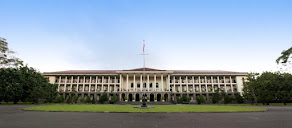Climate Change
(A Fundamental
Analysis of the Greenhouse Effect)
Over recent
years there has been considerable debate concerning the possibility of
industrially induced increases in the concentration of carbon dioxide in the
atmosphere giving rise to increased warming across the world.
This Global
Warming, often referred to in later times as “Climate Change”, has been
accepted as a challenge by laymen, respected scientists, media moguls and
politicians in a significant attempt to pursue the source of the problem and to
prevent further damage being done to an increasingly fragile environment. However, a large number of equally respected
scientists and members of the public, appear to be less convinced of the need
to take action and have put forward in some cases well and passionately argued
reasons that the warming and other climatic changes observed since the
industrial age are simply manifestations of many different natural cycles in
global and regional climate.
Let there be no
mistake, climate change is real, very real and of course has been for many
millions of years. The questions we now
face is whether the large increases in recent years, in the concentration of
atmospheric Carbon Dioxide, which is commensurate with the rate of increase in
our burning of fossil fuels, is the main cause of the observed variations in
climate and what will be the effect in the future. Fortunately, in relation to this problem,
there is an apparently unprecedented level of cooperation between the nations
of the world, all of whom are keen to find the answers to these questions and to
contribute significant resources, if necessary, towards reducing the impact of
the predicted cataclysmic outcomes if we continue along the current path of
developing energy sources based on these fuels.
A timely attempt has also been made by the United Nations to establish
an effective working committee employing a large team of dedicated scientists
to collate the evidence, from earlier literature, related to climatic effects
of the presence of CO2 in the atmosphere and to establish accurate
analytical models of the atmosphere based on this science, from which long
range predictions might be made of the outcomes from increased levels of this
otherwise benign and in fact life-giving gas.
While there appears to be a wide consensus in accepting the basic science
used to create all of the very large number of these computer based models
being used to quantify the problem, it is also reported that the outcomes from
the models vary quite significantly and that the results given by them relating
to various climatic parameters often show large differences between models, as
indicated in Chapter 8 of the UN Intergovernmental Panel on Climate Change
(IPCC) Report 2007. The one exception to
this uncertainty in the results appears to be that of changes in global temperatures
for which the models consistently provide a well recognized increase in
temperature of 1 to 4 oC over the next 50 to 100 years. Further modeling appears to indicate that
such increases in the average global temperature will not allow for a sustainable
future for mankind on this planet as we know it, and that very dramatic and
perhaps costly changes will need to be made to our energy production programmes
in order to quell the flow of ever increasing calamitous events such as
unprecedented melting of ice at the poles and the rising of sea levels in the
tropics. A worrying corollary to the
apparent lack of consistency in the values obtained for many of the atmospheric
parameters, is that this perhaps points to greater uncertainty in the
temperature results than has yet been recognized and that the consistency with
which they predict a positive change in temperature, while clearly showing that
there will be a continuing increase, may in fact indicate a much larger
increase than predicted. A matter of concern to many scientists seeking to
understand this important issue, is the fact that the average global
temperature appears not to have increased in the last ten years or may even
have slightly decreased while CO2 levels have continued to
rise. Is this the lull before the storm?
Flowing quite
naturally from these overwhelmingly pessimistic results obtained from very
carefully designed computer based climate models, the world population is
becoming increasingly anxious about facing an uncertain future and as a result,
governments, quite rightly, are keen to provide the appropriate protection, by
setting up committees of expert economists, scientists and engineers to advise,
with a growing sense of urgency, on the necessary courses of action to quell the
increasing anxieties of their constituents and to reduce as much as possible
the burning of fossil fuels which are the main source of increased carbon
emissions.
Climate
change is one of the defining issues of our time. It is now more certain than
ever, based on many lines of evidence, that humans are changing Earth’s
climate. The atmosphere and oceans have warmed, accompanied by sea-level rise,
a strong decline in Arctic sea ice, and other climate-related changes.
Greenhouse
gases such as carbon dioxide (CO2) absorb heat (infrared radiation)
emitted from Earth’s surface. Increases in the atmospheric concentrations of
these gases cause Earth to warm by trapping more of this heat. Human activities
- especially the burning of fossil fuels since the start of the Industrial
Revolution - have increased atmospheric CO2concentrations by about
40%, with more than half the increase occurring since 1970. Since 1900, the
global average surface temperature has increased by about 0.8 °C (1.4 °F). This
has been accompanied by warming of the ocean, a rise in sea level, a strong
decline in Arctic sea ice, and many other associated climate effects. Much of
this warming has occurred in the last four decades. Detailed analyses have
shown that the warming during this period is mainly a result of the increased
concentrations of CO2 and other greenhouse gases. Continued
emissions of these gases will cause further climate change, including
substantial increases in global average surface temperature and important
changes in regional climate. The magnitude and timing of these changes will
depend on many factors, and slowdowns and accelerations in warming lasting a
decade or more will continue to occur. However, long-term climate change over
many decades will depend mainly on the total amount of CO2 and
other greenhouse gases emitted as a result of human activities.
Project background
'Past climate -- future climate'
Professor Eric Wolff
The
Royal Society and the US National Academy of Sciences, with their similar
missions to promote the use of science to benefit society and to inform
critical policy debates, offer this new publication as a key reference document
for decision makers, policy makers, educators, and other individuals seeking
authoritative answers about the current state of climate change science. The
publication makes clear what is well established, where consensus is growing,
and where there is still uncertainty. It is written and reviewed by a UK-US
team of leading climate scientists. It echoes and builds upon the long history
of climate-related work from both national science academies, as well as the
newest climate change assessment from the United Nations’ Intergovernmental
Panel on Climate Change
The Green House Effect
As is very well known, the basis of the concerns over climate change
is what has become known as “the green house effect”, even though it is almost
as well known that the effect contains many elements which are not common to
the gardener’s green house. In the
latter object, the main process which results in the warming of the interior is
the removal of convection currents which are among the most significant means
of cooling of the earth. A secondary
feature of the glass covering, is that its windows are approximately 90%
transparent to the most intense parts of the solar spectrum, thus allowing the
heat from the sun to enter almost unimpeded and to warm the surface of the
leaves and the ground inside.


0 comments:
Post a Comment